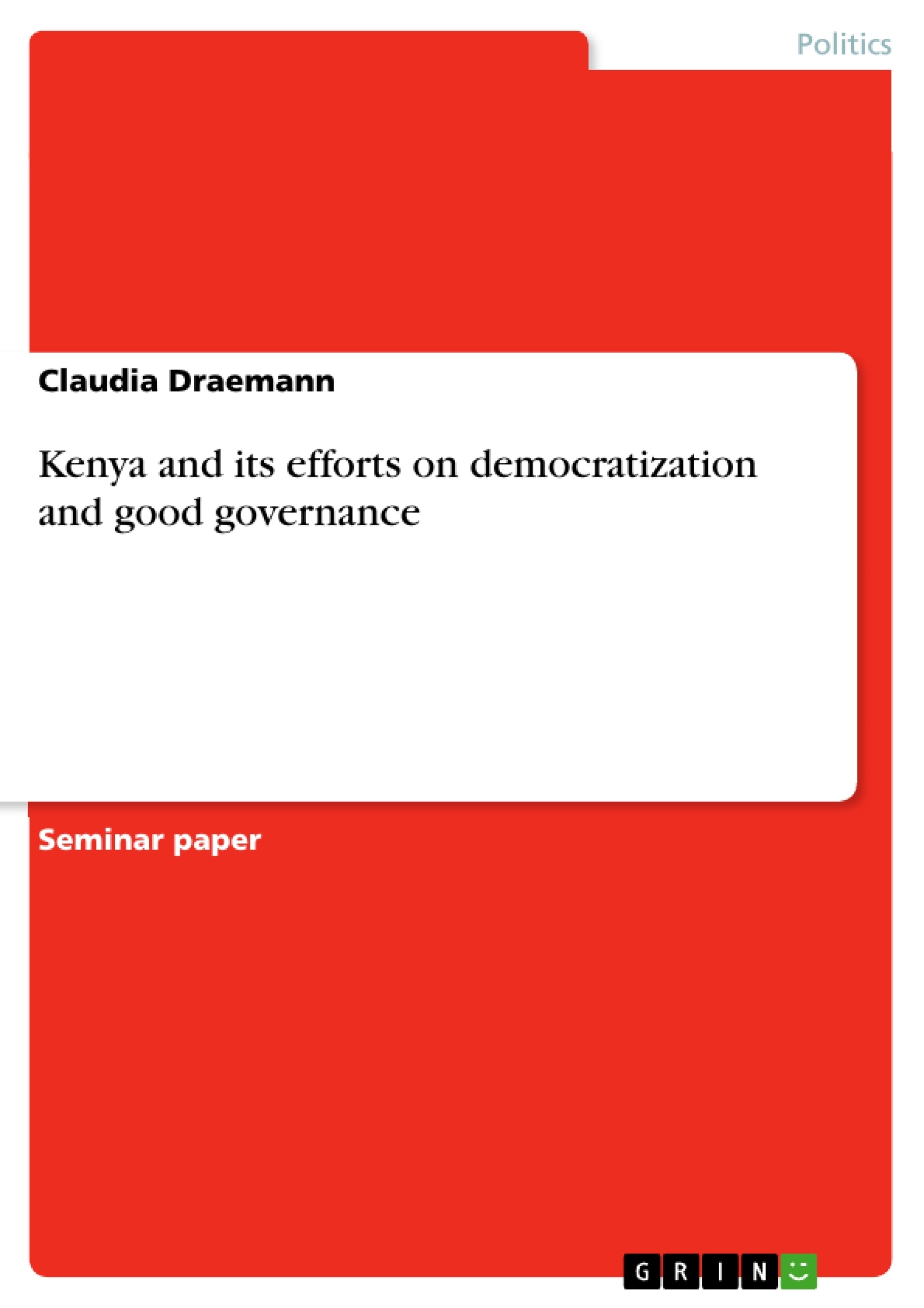The UN Human Developing Report 2005 states that Kenya is one of the world's developing countries. The Human Developing Index published in this report specifies that Kenya has a low human development and thus its rank is 154 of 175 UN member states. This raises the question if the government of Kenya has implemented action to improve its development status and what sort of actions this has been. So, first, the status of development in a country must be assessed. After analyzing the data, concrete measures can be implemented. Berg-Schlosser describes in his abstract a bright range of indicators that exist for assessing development processes in a country. He points out that there is an urgent need for indicators which are used as benchmarks in international relations or for decisions for development by the IMF, World Bank and others. Generally, he emphasizes that the interpretation of the indicators must be done carefully. Often there are problems with the proper conceptualization and the operationalization of certain notions. Problems and limitations of such data analysis still remain. After a short introduction in chapter 2 about the important facts of Kenya, this essay tries to figure out in chapter 3 which indicators of democratization and good governance exist and how they asset the Kenyan efforts on these topics in general. The data is visualized in time graphics and a short description of the main aspects is given. Furthermore, chapter 4 describes the current state of development in Kenya regarding the most important key factors.
Inhaltsverzeichnis (Table of Contents)
- Introduction
- About Kenya - Data, Facts, History
- Indicators of Democratization and Good Governance in Kenya
- Indicators of Democratization - Empirical Assessment for Kenya
- Freedom House Indices
- Vanhanen's Index of Democracy
- Jaggers/Gurr Authority Trends
- World Bank Index "Voice and Accountability"
- Political Terror Scale Assessing Gross Human Rights Violations
- Indicators of Good Governance – Empirical Assessment for Kenya
- World Bank Indices of "Good Governance"
- Transparency International Corruption Perceptions Index
- Transparency International Kenya -- Bribery Index
- Human Development Index
- Gross Domestic Product (GDP) per Capita
- Indicators of Democratization - Empirical Assessment for Kenya
- The Current Status of Development in Kenya
Zielsetzung und Themenschwerpunkte (Objectives and Key Themes)
This essay aims to analyze the progress of democratization and good governance in Kenya by examining relevant indicators. The study seeks to understand the current status of development in Kenya and assess whether the government has taken action to improve its developmental standing.
- Indicators of democratization and good governance in Kenya
- Empirical assessment of relevant indices for Kenya
- The impact of democratization and good governance on Kenya's development
- The current state of development in Kenya
- Challenges and opportunities for Kenya's future development
Zusammenfassung der Kapitel (Chapter Summaries)
- Introduction: This chapter sets the context by highlighting Kenya's ranking on the Human Development Index and posing questions about the government's efforts to improve development. It introduces the concepts of democratization and good governance and their importance in assessing development.
- About Kenya - Data, Facts and History: This chapter provides a brief overview of Kenya's geographical location, historical background, and key data points. It highlights the country's colonial past and its transition to independence, mentioning significant events such as the Mau Mau rebellion and the development of the political system.
- Indicators of Democratization and Good Governance in Kenya: This chapter explores various indicators used to assess democratization and good governance in Kenya. It presents empirical data from different indices, such as Freedom House Indices, Vanhanen's Index of Democracy, and Transparency International's Corruption Perceptions Index. It offers insights into the performance of Kenya in these areas over time.
Schlüsselwörter (Keywords)
The essay focuses on the key topics of democratization, good governance, development, and Kenya. It explores relevant indicators such as the Human Development Index, Freedom House Indices, Vanhanen's Index of Democracy, Transparency International's Corruption Perceptions Index, and World Bank Indices of "Good Governance." The analysis also considers the impact of these factors on Kenya's economic and social development.
- Arbeit zitieren
- Dipl. Betriebswirtin Claudia Draemann (Autor:in), 2006, Kenya and its efforts on democratization and good governance, München, GRIN Verlag, https://www.grin.com/document/84896



